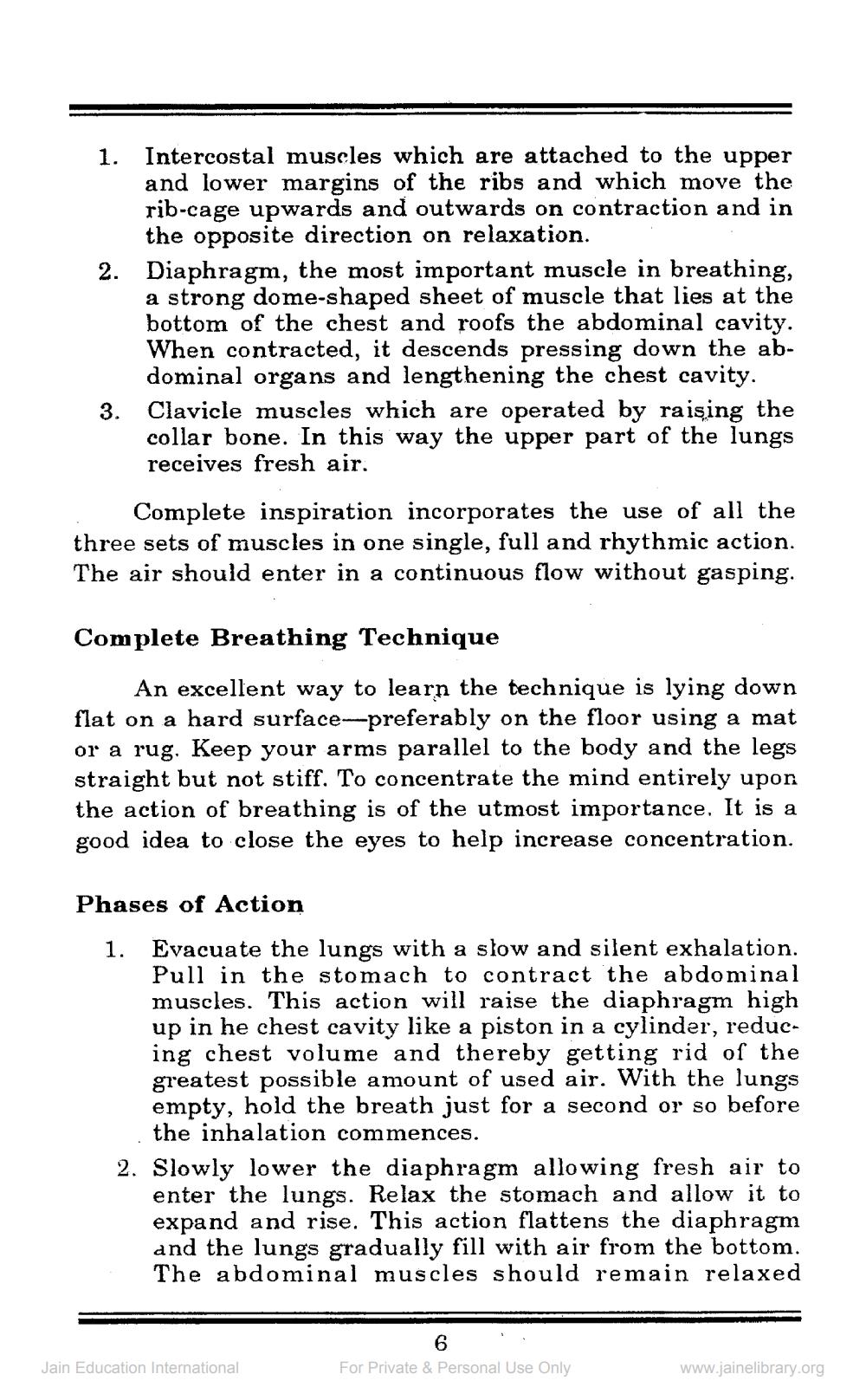________________
1.
Intercostal muscles which are attached to the upper and lower margins of the ribs and which move the rib-cage upwards and outwards on contraction and in the opposite direction on relaxation.
2. Diaphragm, the most important muscle in breathing, a strong dome-shaped sheet of muscle that lies at the bottom of the chest and roofs the abdominal cavity. When contracted, it descends pressing down the abdominal organs and lengthening the chest cavity. Clavicle muscles which are operated by raising the collar bone. In this way the upper part of the lungs receives fresh air.
3.
Complete inspiration incorporates the use of all the three sets of muscles in one single, full and rhythmic action. The air should enter in a continuous flow without gasping.
Complete Breathing Technique
An excellent way to learn the technique is lying down flat on a hard surface-preferably on the floor using a mat or a rug. Keep your arms parallel to the body and the legs straight but not stiff. To concentrate the mind entirely upon the action of breathing is of the utmost importance. It is a good idea to close the eyes to help increase concentration.
Phases of Action
1. Evacuate the lungs with a slow and silent exhalation. Pull in the stomach to contract the abdominal muscles. This action will raise the diaphragm high up in he chest cavity like a piston in a cylinder, reducing chest volume and thereby getting rid of the greatest possible amount of used air. With the lungs empty, hold the breath just for a second or so before the inhalation commences.
2. Slowly lower the diaphragm allowing fresh air to enter the lungs. Relax the stomach and allow it to expand and rise. This action flattens the diaphragm and the lungs gradually fill with air from the bottom. The abdominal muscles should remain relaxed
Jain Education International
6
For Private & Personal Use Only
www.jainelibrary.org




